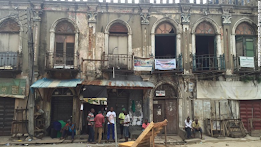The future of African Architecture: Progressing with history
The article, Building for "l'Authenticité": Eugène Palumbo and the Architecture of Mobutu's Congo, by Johan Lagae and Kim De Raedt explores the problem of maintaining authentic African architecture while weathering the storm of modernity. In this article we see the Italian-trained architect, Palumbo, undertake this mission. In this instance, the president of Congo from the 1960s till the 1990s, president Mobutu Sese Seko, ordered the construction of new architecture to replace the colonial Belgian architecture present in the country. Here we see an example of a case where extreme measures are being taken in this mission to "return to tradition". In this effort to return Congo to a pre-colonized state, president Mobutu enforced “cultural” rules and codes in people’s daily lives, and in return, this allowed for little room for other cultural agents or artists to work.
While the intentions behind president Mobutu's attempt to eradicate colonialism's effects on the country, it is pursued in a destructive and unprogressive manner. Palumbo's work in Congo was able to honor Mobutu's wishes to rebuild Congo using pre-colonial Congolese architecture, but he was also able to embrace modernism.




Comments
Post a Comment